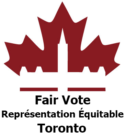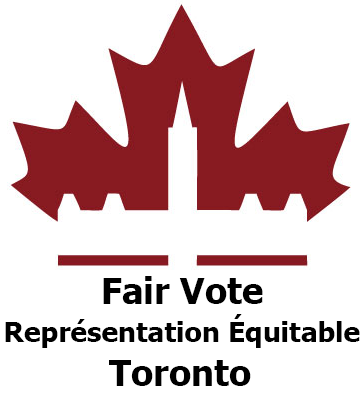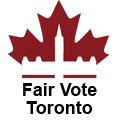Our voting system can be tricky to understand. After learning that our voting system clearly results in the misrepresentation of voters, people often ask, why are the results so distorted? And why did I not know this before?
The problem arises from the fact that Canada still uses one of the most simplistic voting systems in the world – one that was never meant to ensure the accurate representation of people.
The criteria for winning is too simplistic.
First, Canada is divided into 338 geographical areas called ridings. When you vote, you get one vote to elect one person to represent the riding you live in. You are technically not voting to have your views represented; you are voting for an individual to win in your riding.
The voting method we currently use to determine the winner of each riding is called First-Past-the-Post. With this method the only criteria for winning is that a candidate receive one more vote than anyone else. Candidates do not have to reach a threshold of over 50%; they can win by any amount so long as they have the most votes. This creates a problem because without the principle of proportional representation to guide our election results and make it fair, some voters will get the representation they voted for and a large portion of voters will not.
For instance, the riding of Richmond Hill was one of the closest races in the federal election.

The Liberal candidate won in the riding of Richmond Hill by only 112 votes. The Conservative candidate came second by only 0.4%. The Liberal candidate had the support of only 43.5% of voters and the votes of 56.5% of voters, including over 21,500 Conservative voters, did not have any effect on the election. The majority of voters in that riding did not get the representation they wanted.
It is too easy to win.
Here is an example of another problem.

In Trois Rivières, Québec the Bloc Québecois candidate won with only 28.5%, not even a third of voters. The Liberal candidate came in a very close second by only 2.4% and the Conservative candidate third by only 3.3%. Incredibly, over 70% of voters in this riding did not get the representation they wanted and had absolutely no effect on the election, which is a highly undemocratic result.
The simplicity of FPTP can make it too easy for a candidate to win. It also makes it impossible for you to elect someone to represent your views if you live in a riding that has strong support for other parties. In fact, the more diverse the views in a riding, the easier it is to win and the more people go unrepresented under our current system. That is simply unfair and counter-productive to the ideals of democracy.
51% of voters have no effect on the election.
To have a truly democratic society, everyone’s vote should result in representation. But as you can see, with this simplistic FPTP system, a large percentage of voters end up casting votes that have no influence on the election results. In Canada, this amounts to 51% of voters who are not able to obtain the representation they want with their vote. That is over 9 million voters whose votes had no effect on the outcome of the election.
In Canada, there is no stipulation under our current electoral system that the final make up of MPs in Parliament should accurately represent the views of the citizens, and there is no stipulation that everyone’s vote should result in representation. No matter the diversity of views in a riding, only the voters of one party will receive their corresponding representation.
This misrepresentation at the riding-level has a cumulative effect on the overall election results, and serious consequences for democracy including the phenomenon of artificial winners and artificial majorities.
Strategic voting further distorts the will of the people.
This also has consequences for voting behaviour. In a democracy, citizens should be ensured that when they vote, they will get the representation that they voted for. That way, they can confidently vote for their values and feel satisfied that they received the representation that best reflects their views.
Under FPTP however, many voters of smaller parties go to the polls knowing they will never get the representation they want. So, instead of casting an ineffective vote, they feel the only way they can have any effect on the outcome of the election is to vote strategically to prevent another party from winning.
Unfortunately, this kind of voting happens often, and prevents people from truly voting for their values. This tends to keep the same two larger parties in power, which further misrepresents the will of the people and reduces the diversity of ideas and innovation that could be possible in Parliament.
Proportional Representation vs. Misrepresentation.
As you can see, without the principle of proportional representation, Canadians will always be misrepresented. It’s time to adopt the principle of proportional representation, and make sure we put in place a voting system that will result in everyone getting meaningful reprsentation.




